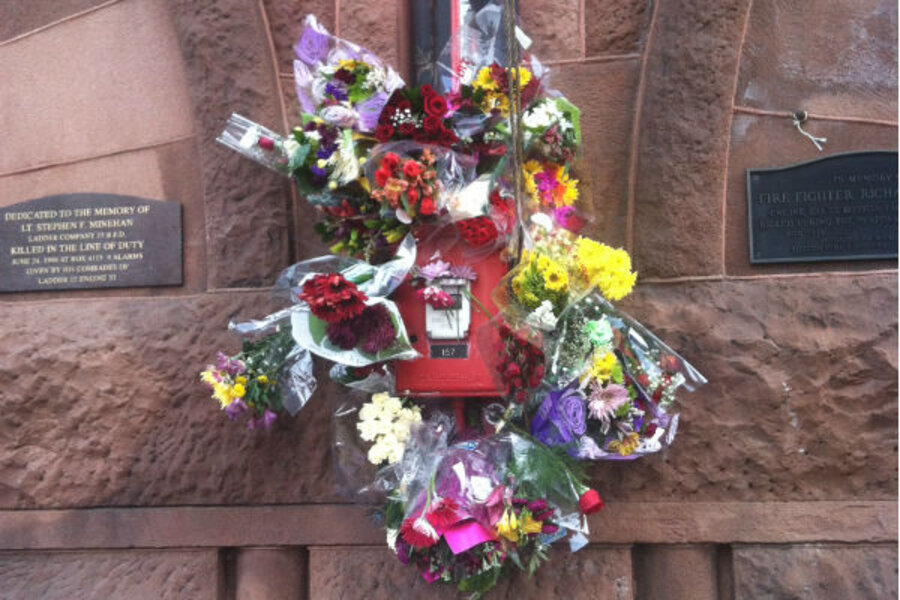Two Boston firemen perish: What is trend line in firefighting safety?
Loading...
| Boston
Two Boston firefighters died while battling a nine-alarm fire in Boston’s Back Bay on Wednesday.
Lt. Edward Walsh and firefighter Michael Kennedy were among the first firefighters on the scene, Deputy Fire Chief Joseph Finn said during a press conference Wednesday night.
The two men helped rescued several residents trapped on the upper floors of a four-story brownstone apartment building before heading to the basement to address the source of the blaze, he said. Minutes later, an explosion, likely triggered by 45 m.p.h. winds, trapped the two men below. The blaze was too strong for firefighters to rescue their comrades, who soon succumbed to the flames.
“This is a sad day for the city of Boston,” Mayor Martin Walsh told reporters at the briefing. “We lost two heroes today."
While the cause of the fire remains unknown, the intense winds played a major role in the rapid escalation of the blaze, Chief Finn said.
“The fire escalated very quickly,” he told reporters. “In 30 years, I’ve never seen a fire travel that fast, escalate that quickly, and cause such havoc in such a short period of time.”
Massachusetts Gov. Deval Patrick (D) offered his condolences to the families and colleagues of the two men and said that the “terrible tragedy” is a reminder to be grateful “for the brave men and women who put themselves in danger day in and day out to keep us safe.”
Over the past 40 years, technological improvements to firefighting equipment and better safety standards have helped to mitigate some of the dangers that firefighters face each day, the Monitor reported last year.
The number of firefighters killed on duty has declined steadily since the National Fire Protection Association first started tracking statistics in 1977. The annual death toll reached a historic low of 65 lives in 2012. Last year, that number rose to 81, still well below the annual average of 151 seen in the 1970s, according to the NFPA.
The reduction in firefighter casualties comes down to two issues, said Denise Smith, a professor at the Fire Service Institute at the University of Illinois at Urbana‑Champaign, in an interview.
“On the one hand, the number of firefighter fatalities is decreasing, in part, because the number of fires are decreasing,” Professor Smith said. Concerted efforts within the fire industry to reduce the number of casualties have also played a role in the decrease, she added.
Experts say that keeping fatality rates low will depend on continued evaluation of building codes in light of new synthetic building materials that are lighter and burn faster, the Monitor reported.
The owner of the building that caught fire in Boston told The Boston Globe that there is nothing about the building, in particular, that should have accelerated the blaze. According to public records, the building does not have a history of significant problems, the Globe found.
Local firefighters have had to set aside their own grief as they secure the building so that inspectors can investigate the cause of the fire.
Area residents and commuters stopped by the slain firefighters’ home station to pay their respects, drop off flowers, and offer prayers at a makeshift memorial.
Gary Harding, a tax accountant who works nearby, stopped inside the station to offer firefighters a handshake, pat on the shoulder, and a heartfelt thank you.
“This firehouse is our firehouse. These are our neighbors,” he told reporters outside the station. “We see these boys drive by all the time, and it’s just unfortunate that this had to happen."
Material from the Associated Press was used in this report.






